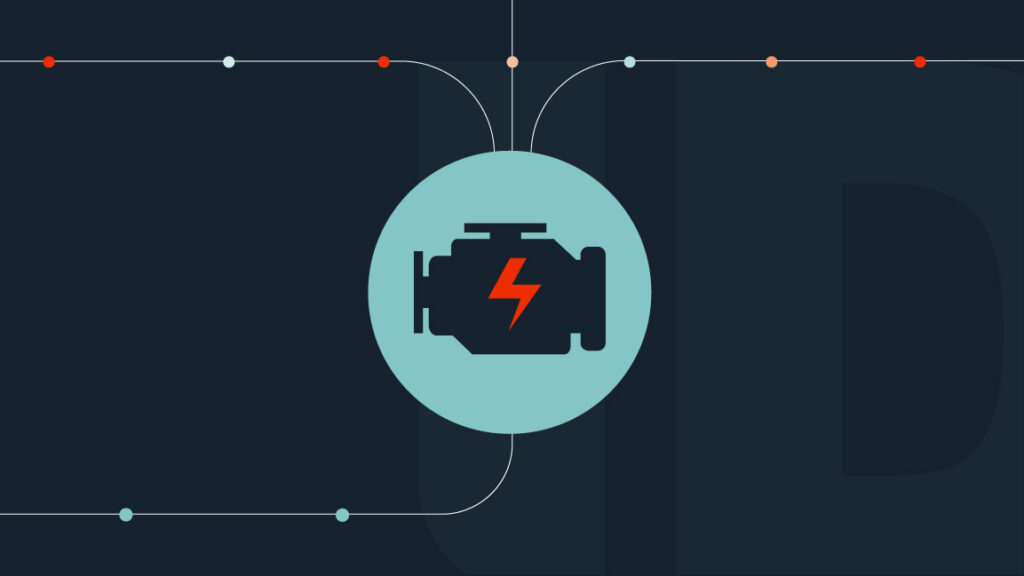Tools + Technology, Without Strategy = Recipe for Disaster

A Business Development VP I worked closely with early in my career would often preach, “If you want a sales team to produce, take away all their excuses.” While I don’t like the negative connotation of this, this concept stuck with me. And, I do stand behind the principle of empowering sales teams. This includes providing them with the right tools to make meaningful connections and build relationships.
Not all sales tool play nicely together. If you add tools haphazardly, you can easily be left with a Frankenstein of cobbled-together sales tools that don’t integrate–leading to data in silos and misalignment between sales and marketing teams. You cannot fix a poor sales strategy by simply adding technology, but the right tools can make execution of your strategy more efficient and accelerate the sales process.
Enter, the Sales Engagement Platform.
A Sales Engagement Platform can eliminate your problems of messy, disjointed tools by bringing multiple systems together and streamlining outreach activities across departments.
What are Sales Engagement Platforms?
Sales Engagement Platforms (SEPs) do just that, they enable sales–to be more organized and streamline their workflow through automation and integration. They make the seller’s day-to-day life easier by automating monotonous manual tasks, allowing your sales professionals to spend time doing what they do best…building relationships and closing deals. And spend less time managing inboxes, tracking down email responses, manually setting countless follow-up reminders and more.
Sales Engagement Platforms differ from many sales tools in that they aren’t just
another disparate tool–they centralize workflows and link tools together, so sales teams have access to all the information on a contact or account they need to improve their interactions, prioritize their sales activities, accelerate the sales cycle, and ultimately increase revenue. (Now, I might have your attention.)
What Sales Engagement Platforms are NOT
While marketing and sales technologies all have the common goal of assisting with efficient revenue growth, they serve entirely different functions. SEPs aim to bridge the gap that exists between sales and marketing teams by creating central hub for planning and execution across all channels. But before we dig in too much, let’s clarify what SEPs are NOT:
SEPs are not Customer Relationship Management systems (CRMs). CRMs (like Salesforce, Zoho, or Microsoft Dynamics) help track and retain customer and prospect data throughout the sales cycle. While these are essential to a successful sales team, they don’t function well as SEPs and oftentimes, when sales teams try to make them function like a SEP, things get messy. CRMs are seen as the source of truth and the baseline technology for sales, marketing and customer support.
SEPs are not Marketing Automation Platforms (MAPs), either. MAPs (like Adobe Marketo Engage or Hubspot) manage, optimize and automate mass communications with your prospects and clients. They can work hand in hand with SEPs but they do not facilitate one-to-one engagement between sales team members and prospects.
SEPs are not just fancy activity trackers. At least not the good ones. Tracking activity barely scratches the surface of SEP capabilities. They can automate multi-channel sequences, bring CRM data to the email inbox, provide insights into effective communications, perform A/B tests, streamline communication and more.
Why do I need a Sales Engagement Platform?
Today, around 87% of sales development organizations have adopted a sales engagement platform. Why? Because they work. In fact, 92% of sales development teams say that having an engagement platform in the technology stack is critical to their team’s success. (Source: Gartner). Why do you need a SEP? Consider the following:
- Reps aren’t spending enough time selling.
An unnerving amount of your sales representatives’ time is wasted on administrative tasks that don’t contribute to closing deals and increasing revenue. Things like manually updating a CRM (we all can admit this might not happen as often as marketing teams would like it to) or managing the back-and-forth email chain that ensues when trying to schedule a meeting time. A study by Salesforce revealed that most reps spend around 64% of their time on admin and other non-selling tasks, instead of selling! Imagine the impact on revenue if you were able to double your sales productivity by utilizing a SEP’s automation and integration features. Can you say “promotion”?
- Multiple tools and logins hinder productivity and visibility.
I touched on this point earlier but one of the biggest benefits to using a sales engagement platform is that your sales team can spend less time moving between apps and tools (are you sensing the efficiency theme here?).
Using multiple tools not only creates inefficiencies in logging in, moving from desktop and mobile, toggling between software and more, it also creates silos of data. Using a sales engagement tool can bring systems together and you can keep track of your sales team’s activities in one place.
- Standardize processes and eliminate guesswork.
Sales generally follows a set of common principles and tasks. These tasks combined make up your go-to-market motions. Regardless of industry, product, or service, all go-to-market teams have pretty much the same jobs to do including finding people who need what you are offering, engaging with prospects in a meaningful way and having visibility into your business. The best performing sales teams create playbooks and sequences to standardize this process and assets (emails, voicemails, LinkedIn Messages, and more) that can be used, tested and revised over and over again.
Creating these processes within your sales engagement platform enhances your company’s most valuable technical asset, your data. Capturing data on your outreach efforts allows you to repeat what’s working and revise what’s not–advancing your strategy from a reactive sales approach where you cross your fingers for engagement to a proactive approach with engagement you can predict. No more guesswork on which messaging or channels work best.
You will learn when to call, how many times to follow up, what script to use, what email to send before calling, what firmo-and demographics convert better, and more. Your SEP will help you look at these important questions and provide the data to continually optimize your sales process for performance.
One common scenario is getting someone to agree to a meeting in writing but failing to set a time or being ghosted once the meeting is booked. Many SEPs integrate with calendars and calendar tools that allow prospects to select a time based on your availability. If they don’t book a meeting in a day, put them in a small, automated playbook or sequence that nudges them to book the meeting (one that you have tested and know works). The sales rep doesn’t have to remember to follow up, and the likelihood a meeting gets booked increases. The rep can move on to engaging with the next prospect.
- Work smarter not harder: personalization at scale.
For years sales reps have been faced with a dilemma: to personalize or to scale. Personalizing every email meant investing a ton of time and accepting that you could only reach out to a handful of prospects each day. To scale would increase the volume of emails, but would mean blasting the same generic message across every prospect. SEPs allow you to do both.
Harness the power of integrations with your SEP. Many offer deep personalization features, allowing sales reps to personalize at scale, such as:
- The ability to personalize sequences based on persona or industry
- Video personalization
- Conditional variables based on your data
- Personalized snippets, allowing sales reps to tailor sequences
- A personalization score to evaluate the level of customization in your emails
- Content recommendations based on communication channels and prior history of communications, content shared, and engagement analytics.
- Timing is everything and silence isn’t golden
Reaching out to prospects in a reasonable time once they act is critical to the success of your sales team. Research from Outreach.io shows that 92% of buyers reply to sales reps during a 14-day window of opportunity. After 14 days, you can reasonably assume a prospect will not respond. With an automated sales sequence from your SEP, you don’t have to worry about missing this 14-day window. Your touchpoints and follow-ups can be automated, and prospects can be enrolled when they act.
Successful B2B sales reps reach out to buyers nine times across various channels (every 1.5 days during the critical 14-day window).1 Use a SEP to find what cadence works for your business and set up best practices for your sales team, including what communication channels to use, frequency of communications, and what to say. Enable your sales team to send the right message at the right time to break through buyer silence. Creating sequences using methods that have been proven to work takes pressure off sales teams and leaders to reinvent the wheel. Using learnings from the past gives sales teams a consistent, repeatable plan of action for breaking through buyer silence.
- Put the prospect chase on autopilot
Once your 14-day window of opportunity has passed and you still haven’t heard back from your prospect, you don’t want to completely drop the conversation. But you are also interested in pursuing new leads entering their 14-day window. With a SEP you don’t have to choose between spending time nurturing new prospects and chasing those who have gone silent. Put this communication on autopilot. Set up different sequences or nurture programs in your SEP to continue to reach out to prospects who have gone dark. Prospects who once engaged continue to hear from you, but you can concentrate your efforts on those who are more engaged right now.
Will adopting a Sales Engagement Platform accelerate sales and improve ROI?
The faster reps can close sales, the quicker they can get to nurturing the next lead. Sales Engagement Platforms help sales accelerate their outreach at every stage of the sales funnel by the use of templates and automation. This speed is not at the sacrifice of quality due to integrations that allow for data-based personalization.
Let’s recap. Utilizing a Sales Engagement Platform can help both sales and marketing teams:
- Shorten the overall sales cycle
- Meaningfully engage with prospects
- Equip your team with the most up-to-date content and standardize communications
- Use customer engagement insights to effectively respond to prospect signals–regardless of the communications channel or stage in the sales cycle
- Measuring cross-channel engagement of approved content and assets–ensuring that content is effective across the buyer journey and has measurable ROI.
- Use data to inform marketing and sales play strategies
- Create A/B tests, allowing for optimization and refinement of sales strategies
- Develop more efficient methods for closing deals and accelerating ROI.
Not convinced yet? Reach out to discuss how a Sales Engagement Platform can provide more streamlined communication, create more aligned sales and marketing teams, increase productivity, and accelerate ROI.
1The Secret to Breaking Prospect Silence in the Sales Cycle – Outreach.io


